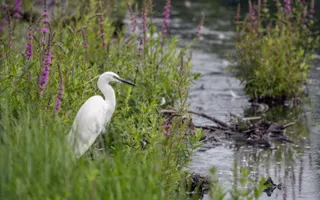Common reed facts
Scientific name: Phragmites australis
Family: Poaceae
Origin: Native
Type: Perennial
Common reeds and our canals
An unmistakeably tall plant, common reeds form extensive reedbeds along the edges of our canals and rivers. This perennial is from the grass family and provides habitats for wildlife species above and below the water, while some birds – like the rare bittern, marsh harrier and bearded tit – nest among its stems and leaves.
Reedbeds are also natural biological filters that strain surface run-off water, keeping our canals and rivers clean. When left alone, the reeds will become scrubland overtime.
Our teams have been planting floating reedbeds along our canals to provide much-needed habitats for wildlife.







